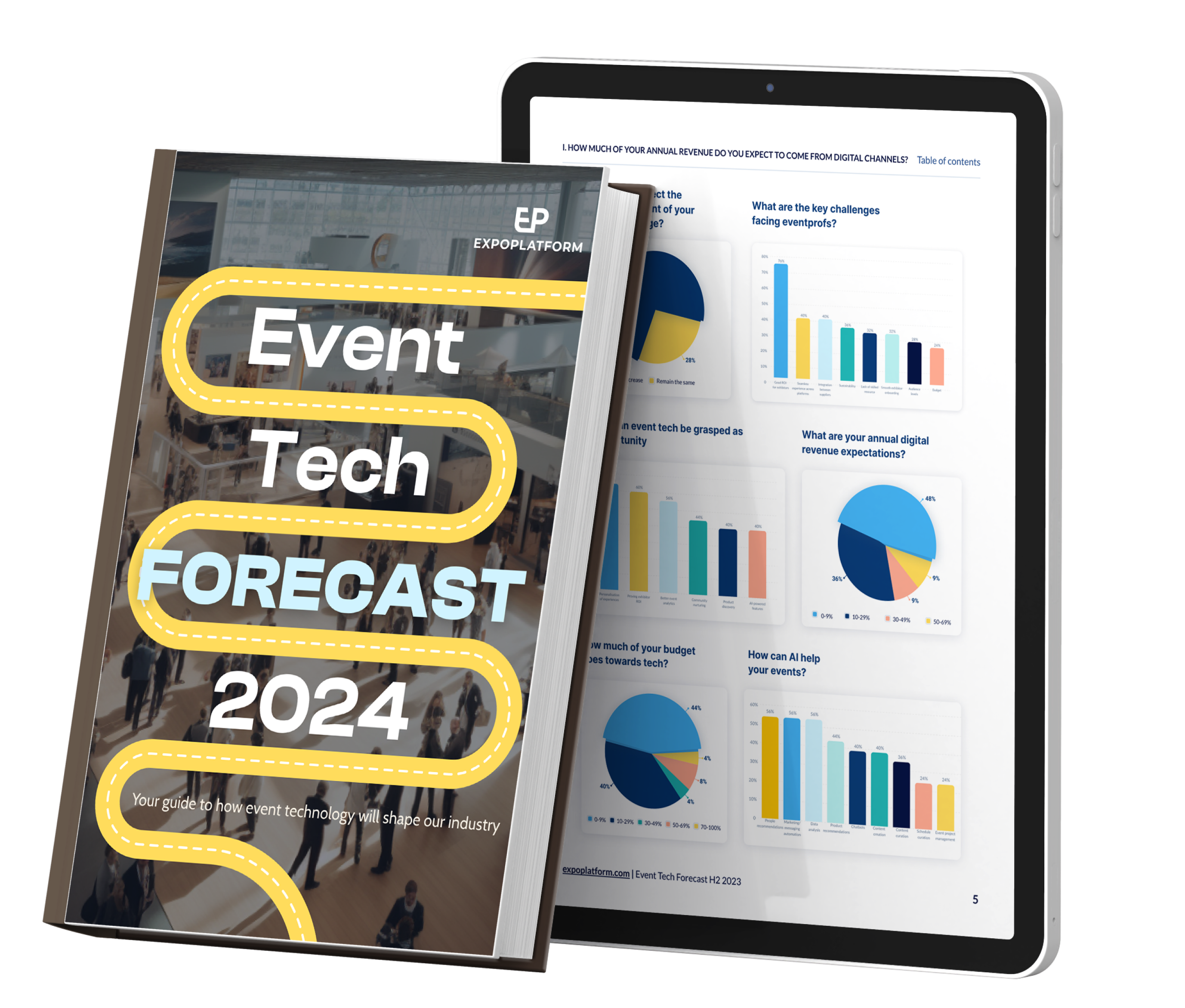
Get Agile in your hybrid solution development
Picking an adaptable approach for working with a technology platform in a rapidly changing environment is a good way to prepare your business for success. Here ExpoPlatform looks at how the Agile approach might be your route to successful event creation.
Ekaterina Solomeina, founder of the Future London Academy, a centre dedicated to promoting innovation in the UK’s capital, explained that even if you don’t know your destination, you can still make sure you’re travelling on the right road.
“It’s difficult to know what you don’t know, but to be ahead of the competition – to constantly innovate – you need to be aware of new market opportunities, the latest methodologies and the most promising technologies that can take your business to the next level,” she said.
With the current pace of development in online events, typified by frequently changing requirements, new technologies and the involvement of multiple decision-makers, one approach worth considering is Agile development.
When it was published in 2001, the Manifesto for Agile Software Development set out to give software developers a flexible and responsive approach to project development.
By favouring people and interactions over processes and tools, working software over comprehensive documentation, customer collaboration over contract negotiation and response to change over following a plan, Agile presents a fluid alternative for today’s changing event landscape.
Rather than being a methodology or a framework, Agile proposes a set of values and principles that provide the foundations for flexibility – in many regards a counterpoint to the “waterfall”, linear approach.
For a technology partnership in the exhibitions industry, it provides a useful set of values and principles for adapting services and products to the needs of the organiser.
Here are several ways to integrate some of the principles of the Agile Manifesto in your online event development.
Break the silos of your project
The exhibition/event cycle is never-ending and the ability to adapt throughout the project ensures learning and analysis from one event is carried into the next.
The Agile documentation states “business people and developers must work together daily throughout the project”.
The dependence on cross-functional teams makes communication more simple between different stakeholders in the project.
Early and continuous delivery
Satisfying the customer through “early and continuous delivery of valuable software” boosts our chances of meeting customer demands and contributing to ROI.
Responding rapidly to changes gives your customers the value they are paying for more frequently and introducing early feedback and quality control limits the chance of you being asked to implement significant changes later in the process.
But project development is an imprecise science, so…
Welcome changing requirements late in the project
Change requests should be welcomed even at the late stages of project execution. This Agile principle states that “Agile processes harness change for the customer’s competitive advantage”.
The needs of an organiser’s exhibitors and visitors might only become clear as the project nears its conclusion. Traditional project management views late-stage changes as off-scope, invoking an expanded project scope and spiralling expenses.
ExpoPlatform experienced this first-hand with the team at luxury travel event ILTM, where late changes had a significant impact on the success of the final product.
“We work to the wire,” explained Alison Gilmore, exhibition director of Reed’s Luxury Travel Portfolio.
“I had a conversation with [ExpoPlatform] and said ‘there’s another site and they have this dashboard and well; we want that dashboard’. Four days later – I had that dashboard.
“That’s the kind of customer service you need when everything is moving fast and it’s changing by the day.
“They helped us deliver good customer service to our own clients and they gave it to us.”
Building a culture that embraces uncertainty, accepting that late changes may be more influential in the creation of a successful solution for the end customer, is key to Agile development.
In the late game teams adopting Agile shouldn’t have a problem responding to these changes in sufficient time.
Deliver value frequently
Agile promotes the delivery of working software frequently, “from a couple of weeks to a couple of months, with a preference to the shorter timescale”.
In this way a company can reduce the batch sizes used to process work.
Shorter time frames for planning free up time to do the actual project work and make adjustments on the job.
This matters because…
Working software is the primary measure of progress
The seventh Agile core principle states simply that it doesn’t matter how many lines of code, bug fixes or working hours have been invested in the project, it’s all for nothing if the end result is not in line with customer expectations.
Regular delivery built on shorter iterations ensures the project is on the right track and in the current pandemic climate – anything can be brought to a halt at a moment’s notice.
As Valentina Anastasio, web marketing specialist at Bologna Fiera Cosmoprof, said of her experience working with ExpoPlatform: “Our clients replied to us saying ‘you’ve done a great job, because even though the trade show wasn’t available due to Covid-19, we were able to get in contact with potential clients’.”
Face-to-face is most cost-effective communication
Everything Agile is predicated on communicating in person. What we write and what we mean (or how we feel) is not necessarily the same. Our success depends on a deep understanding and close partnership.
Reducing the time between asking a question and receiving an answer is very important in a process built on short iterations and frequent delivery.
Fortunately, the past 18 months have spawned a multitude of direct communication and workflow tools able to facilitate this whether we’re in the same room or on different continents.
Every day, we get closer to consigning the exhibition industry’s reliance on Excel and Outlook to the past.
Self-organising teams generate most value
To be successfully agile in a rapidly-changing environment occupied by multiple decision-makers, the responsibility for all project decisions cannot be placed at the feet of one person.
The founders of Agile state that “the best architectures, requirements and designs emerge from self-organising teams”.
The trick is to motivate the teams, because a motivated team generates the most value for the customer. So consider your company’s incentive and reward schemes – ensure they are appropriate for the tasks they have been presented with.
As with many elements of Agile thinking, this may require a cultural rethink of your business before a truly agile approach can be adopted with your technology partner.
And of course, if you work in short iterations, you’ll need to…
Regularly reflect and adjust your way of work to boost effectiveness
The final Agile management principle relates to evaluating your performance and improvement. “At regular intervals, the team reflects on how to become more effective, then tunes and adjusts its behavior accordingly”.
Working in shorter cycles requires more frequent evaluation.
There are 12 principles of Agile, so for a more in-depth look at how these can help your organisation, take a look at the manifesto. Also consider related frameworks that help you to operationally bring these principles into play, such as Scrum.
Whether Agile is overhyped, or successful at letting you reach your customer and business needs, its success depends largely on ensuring the associated methods, terminology and culture fit neatly within your company’s culture.
As Megan Cook, group product manager at Jira Software, explains: “Adopting Agile principles and values in an organisation requires significant cultural change.
“It takes longer to change the way that you think than the way that you work. However, a framework like Scrum helps you to think in a more agile way.”
But in a time of such disruption and change to an industry already off the pace when it comes to the introduction of technology already mainstream elsewhere, the 12 Agile principles provide one approach to building that foundation successfully.
There's more you might like

Hybrid Events Guide: how to plan your next hybrid event in 2022
Hybrid events continue to be a crucial part of the marketing roster. In our latest guide, we explain why they are important and detail a step-by-step process to plan your next hybrid event. In the past two years, changing customer expectations towards responsiveness and personalisation as well as pandemic-related restrictions have made digital outreach critical ...

Concerns over health rules remain top priority for choosing venues
Concerns over commitments to Covid-19 safety measures remain top factors influencing how organisers choose venues, a new study reveals. EventMB’s State of the Event Industry 2021 report found out that 39% of the respondents polled wanted a statement of commitment by the premises to follow local health rules. Another 17% considered staff vaccine mandates their ...

Shaun Hinds: event industry must unite and be at heart of recovery
The event industry must unite and be at the heart of the UK’s economic and societal recovery as we emerge from the pandemic, according to the Manchester Central CEO. Shaun Hinds believes some representative bodies failed in securing support for our sector in the most “critical aspect” by not making good connections with governments and ...







